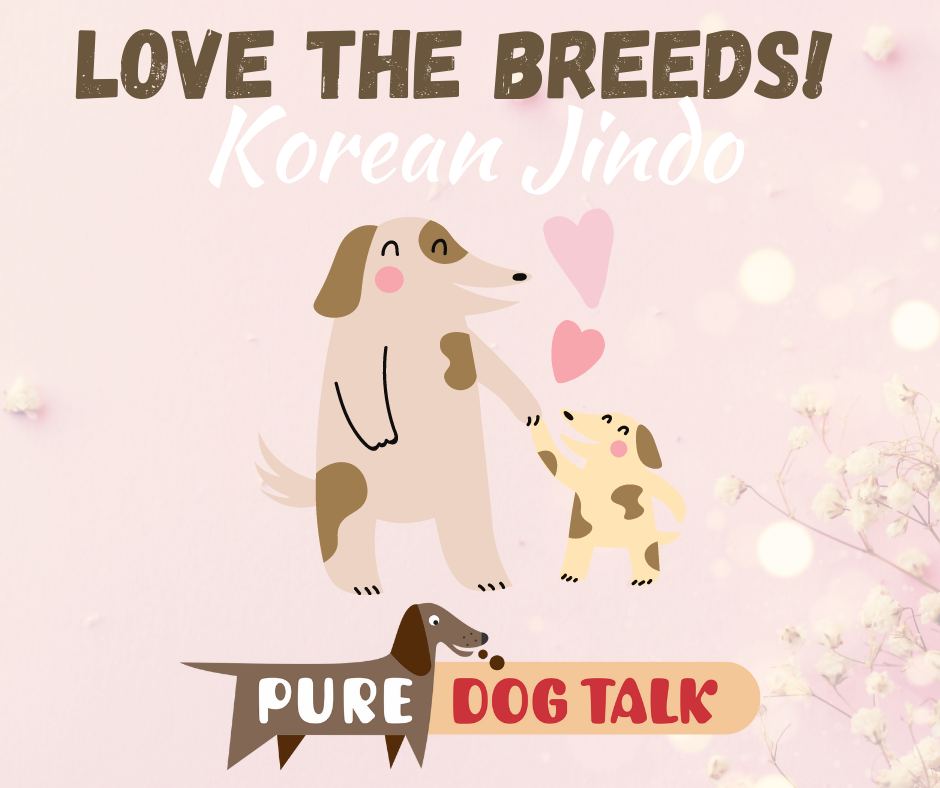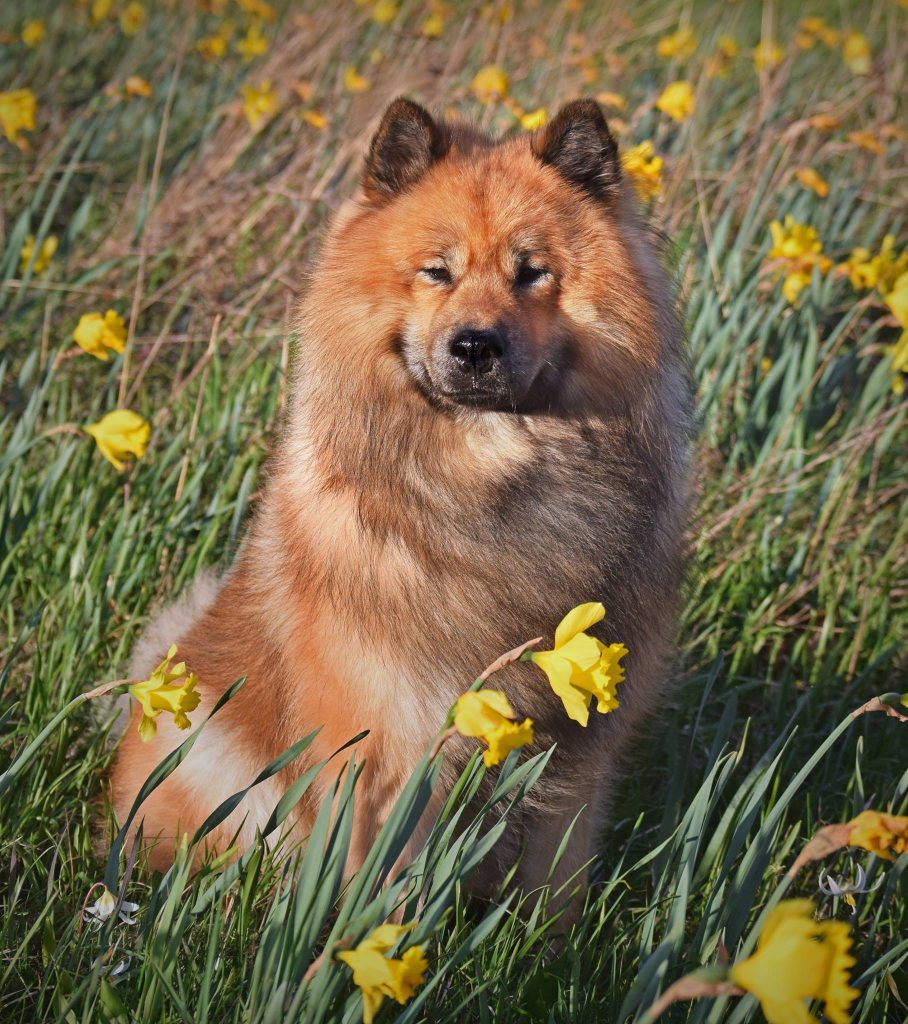485 — Korean Jindo: Independent, reserved, polite and serious
Korean Jindo: Independent, reserved, polite and serious
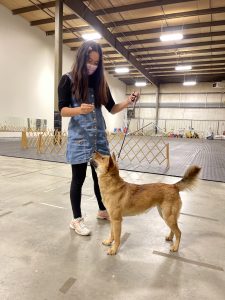
Hannah Yi and her Jindo practicing for Junior Showmanship competition.
Hannah Yi and Nichole Royer join host Laura Reeves to share information about the rare and fascinating Korean Jindo.
Developed on Jindo Island, off South Korea’s coast, as an isolated population of centuries old village dogs, the breed is a cultural icon in its home country. Renowned for its ability to find its way home, a feature memorialized in Korean culture, Jindo are dedicated hunting dogs and very serious about guarding their home.
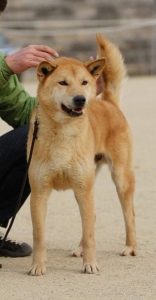
Jindo in South Korea.
“They were developed as a pretty hardcore hunting and guard dog,” Royer noted. “They are generally used for hunting small game, but they also hunt deer and even wild boar in small groups. They are not a breed that developed hunting along with their owners. They actually expected Jindos to go out and catch small game on their own and bring it home.
“When they chased down something like a deer, and I should add the deer and the wild boar on Jindo island are not the size of the deer and wild boar we have here in the US. The deer are much smaller … a small group of Jindos would chase them down and then a couple of the Jindos would stay there to guard the deer, while one or two dogs went to find the owner.
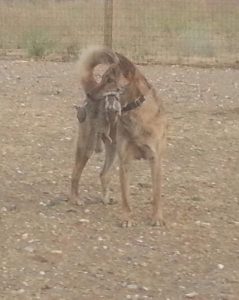 “(They were) designed to go out, be able to think for themselves, be able to make their own decisions. They take their owner’s wishes under advisement, but really are not designed to go around saying ‘what can I do for you.’ It’s a partnership rather than being what the dog can do for their owner.”
“(They were) designed to go out, be able to think for themselves, be able to make their own decisions. They take their owner’s wishes under advisement, but really are not designed to go around saying ‘what can I do for you.’ It’s a partnership rather than being what the dog can do for their owner.”
“I visited Korea a couple of times as a child,” Yi said, “and in the neighborhood and a bit of the rural parts, you would see them outside … I always (had them) pointed them out ‘hey, that’s a Jindo dog.’ They’ve always been a really independent spirit. Even though I didn’t know much about them as a kid, I just knew that (they were) culturally ingrained in your knowledge.
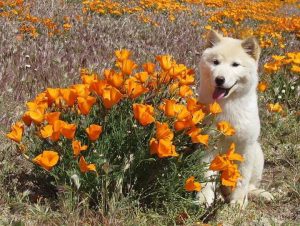
A white Jindo is featured in a popular Korean legend.
“(The story in Korea is) there was this dog and it was a white Jindo dog … it lived with its elderly owner in the city. But one day the owner had to sell the dog. So it was really far away. Then seven months later, the dog appeared back to the owner’s house. It found its way home. So that’s just really stuck to a lot of people. There are a lot of children’s books and merch made about that and it was just really interesting to me. I’ve just always known that story.”
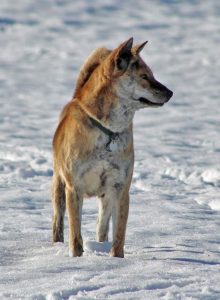
Dog aggression is very much the norm for the breed, according to Royer.
While Dog Aggression is a serious awareness with the breed, Royer notes, “They are intelligent guard dogs that are not looking for that excuse. They will act if they have to, but they’re not looking to want to act.
“Same sex dog aggression is absolutely the norm in this breed. This breed in public should not be aggressive towards other dogs without good reason. However a strange dog getting in their personal space absolutely is good reason. They do not tolerate fools lightly and they do not tolerate rude behavior from other dogs. Jindos never pulled their punches. If they choose to use their teeth, they intend to do damage.
“Jindos tend to be a one person or one family dog. They should never be aggressive without good reason. But they also generally are not going to be like my malamutes who will jump into everybody’s lap and everybody is their new best friend. They range from being very reserved ‘I don’t know you, so I don’t really want you touching me’ to being calmly friendly. Very polite.”
459 – Eurasiers: “Floofy,” quiet, mellow companions
Eurasiers: “Floofy,” quiet, mellow companions
 Pure Dog Talk listener Marissa Armstrong shares her passion for Eurasiers with host Laura Reeves.
Pure Dog Talk listener Marissa Armstrong shares her passion for Eurasiers with host Laura Reeves.
Developed in the 1960s in Germany, the Eurasier is a Spitz type breed with a double coat, a calm demeanor and a tendency to not bark. They are recognized in Canada, FCI and in the FSS by the AKC.
“I do love the fur,” said Armstrong, who acquired her first Eurasier in 2012 and is the secretary for the Eurasier Club of Canada. “That’s the big thing. They’ve got these beautiful coats. I always liked the spitz breeds but one of the things I don’t like about most of the spitz breeds and the Pomeranian is the barking dogs. The bark bark bark bark bark that just drives me nuts.
 “So, I was looking at like the Samoyed and the Keeshond (but) they bark. A lot. (Eurasiers) don’t bark. I mean if someone’s at the door they bark a couple times, or like the deer that were outside of my door this morning, they might bark. But they really don’t bark very much. Once or twice and that’s it and it’s like a low bark it’s not that shrieky spitz bark.
“So, I was looking at like the Samoyed and the Keeshond (but) they bark. A lot. (Eurasiers) don’t bark. I mean if someone’s at the door they bark a couple times, or like the deer that were outside of my door this morning, they might bark. But they really don’t bark very much. Once or twice and that’s it and it’s like a low bark it’s not that shrieky spitz bark.
“They’re a great breed for people that like the little bit primitive looking (breeds) but maybe can’t handle some of the more working type breeds or the truly primitive breeds. They don’t have the time or maybe experience of meeting the needs of those kind of breeds… the sharper temperament in the more super aloof breeds… so a lot of people really like the Huskies you know after ‘Game of Thrones’ and everything … but a lot of those people that like the sort of look but maybe want a more beginner friendly dog, the Eurasier is good choice.
“They do need socialization, specifically. They can be a bit reserved with people but it’s not like they’re going to be aggressive or anything. Basically, they’re hard to mess up too badly. I think they can be a good breed for people that are looking for that sort of (aloof) temperament but not quite there.
“This breed definitely needs their people to be around … You don’t have to not work and just look at your Eurasier all day, but if you’re out working an 8-hour day, you have to be dedicated to say ‘OK my day is over. I need to go do something with my dog’ and give them that attention. That is their purpose.
“They’re a companion breed even though they’re in working group up here (in Canada). They want to be with their people. It’s actually in their breed standard that they must have lots of close contact with their people in order to have the correct temperament and behavior. Obviously, if you don’t like vacuuming, this is probably not the breed for you. I have a vacuum on each floor at this point.”
To learn more, listen to today’s episode and visit any of the following links.
Eurasier Club of Canada: http://eurasiers.ca/
United States Eurasier Club: https://www.useurasierclub.org/
Breed standard (CKC): https://www.ckc.ca/CanadianKennelClub/media/Breed-Standards/Group%203/Eurasier.pdf

